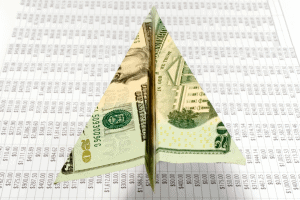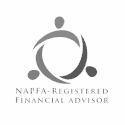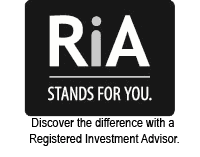The “Great Resignation” is in full swing and early retirement continues to grow in popularity. A well-prepared plan is often the difference between failure and success for early retirees. Here is our early retirement checklist for you to follow.
5 Checklist Items for a Successful Early Retirement
The Covid era has spawned and accelerated many trends that will forever change the way we live. None possibly more impactful than the “Great Resignation”. According to the Pew Research Center (November 2020), the third quarter of 2020 saw 3.2 million more Baby Boomers retire than the same period the year before. Comparatively, between 2011 and 2019, the number of Boomers retiring increased by an average of about 2 million per year (Pew Research Center, 2020). We are experiencing an early retirement boom.
What constitutes an early retirement?
While there are likely many definitions out there, we view anyone considering retirement before Medicare eligibility (age 65) to be an early retiree. However, that said, generally a person looking to retire at 59 or 60 has much more to consider and plan for relative to a 64-year-old retiree.
We have worked with many retirees over the years. Most of our clientele fall in the ‘plus or minus 10 years from the average retirement’ age. Increasingly, we are helping more clients, family members and friends prepare for the luxury, and challenge, of an early retirement. From this experience we have learned a lot about what makes for a successful early retirement. Our learnings show that there are five items that consistently come up as being key to your success:
1. Define and Envision What Life Looks Like in Retirement
First on our early retirement checklist is to define and envision. According to the Bureau of Labor Statistics, in 2019 the average retiree watched 32.2 hours of TV per week. That’s nearly an entire workweek. That same retiree also dealt with rates of divorce, alcoholism, and depression that were far higher than most other age groups. Re-read all of that and you may understand why this item remains first.
Simply put, you will run a very high risk of becoming bored. You will become disengaged and potentially depressed if you don’t have a plan for how you will spend your loads of extra free time in retirement.
Solution?
Five years out from retirement, begin documenting what you will do to keep your physical and mental health once you retire. Create a ‘vision’ and ‘mission’ statement for your retirement. They can be as effective in retirement as they are in business. Check and update that plan every year. Tweak as necessary. In your year of retirement, formalize it.
What should or could be on that list? The list is nearly endless:
- Travel (if that wasn’t already in your plan, you’re truly an anomaly)
- Time with family & friends (my mother spends 4 days a week with her grandchildren and loves every second of it)
- Part-time work in what could be considered a hobby or passion (that way it isn’t really work)
- Volunteer (others need you and you’ll find it to be the most rewarding thing you’ve ever done)
- Professional retiree social groups – my former employer, Rockwell Automation, has one here in Milwaukee
- Take up a new hobby or hobbies (not golf though, unless you have endless patience)
- Join a community group that supports a cause you’re passionate about
- Enlist in a non-profit membership organization that serves a professional cause tied to your interest or career. The MKE Tech Hub Coalition welcomes members who are interested in promoting the Milwaukee tech ecosystem.
- Audit a college course or seminar to learn new skills. Many universities will allow retirees to join in for a class or semester.
Successful early retirees aren’t only prepared financially. They have envisioned and planned out how they will spend their active years of retirement. You should do the same.
2. Build Your Retirement Budget
The importance of this one cannot be over-emphasized either and that’s why it is feature on our early retirement checklist. A household budget is always important, but especially as you prepare for early retirement with our early retirement checklist.
Why?
A budget, and your spending, are foundational to financial success. It will tell you when, where and how you are spending your money. In doing so, it will also provide accountability, empowerment, and insight. Keeping score can be fun and this applies to personal budgets. If you were overspending in a particular area, wouldn’t you want to know so that you can adjust? Also, stop viewing your budget as a “ball-and-chain”. If done properly, this can be a way of feeling good (empowering) about your spending.
In addition to these benefits, your retirement budget will provide tremendous insight into where and how you can reduce expenses should it be needed. This can be particularly important during early retirement where most of us are more exposed to ‘sequence-of-return’ risk. That is, the risk that volatility in the stock market may result in you making withdrawals at a time when your account balances have declined. We want to avoid that if we can and give your investments time to recover. That early retirement budget of yours will tell you where you can cut back on spending to minimize your investment account withdrawals. Don’t underestimate how impactful that could be.
The sooner your build budgeting into a habit, the better. The good news? It can be easy to do:
- Collect four months (make them random) worth of spending account statements (credit cards, banking accounts, etc).
- Categorize your spending according to personal expenses (food, clothes, entertainment, car maintenance, etc), insurance premiums, tax deductible expenses (out-of-pocket medical, real estate taxes, charitable giving, etc) and saving & investing (if you’re not already retired).
- Enter these categorized expenses into an excel template with one worksheet for each month. Need a template? Call (414-306-6777) or email me (drew@dickmeyerboyce.com), I’ll send you one.
- Average your monthly expenses over the four months for each category. Adjust estimates up or down as you see fit. Be sure to remove, or adjust for, any large one-time expenses like a new car purchase, new furniture or a large vacation trip.
- Annualize (monthly average x 12) each category. Congratulations, you now have a spending budget to track expenditures now and into your early retirement.
- Automate & keep score. Track your spending against your budget, monthly or quarterly, using personal financial software like Quicken. Software like Quicken will allow you to enter your budget, connect spending accounts, synchronize them, and even automatically categorize expenses.
Budget is not a swear word, especially for those of you considering early retirement. With today’s technology, you have no excuses. Get it done!
3. Establish a Well-Defined, Tax Efficient Income Plan
There is more to “unpack” and discuss here than could be covered in one blog. A lot more. If saving for retirement is likened to climbing a mountain, consider taking income in a tax efficient manner during retirement, the equivalent of going back down it. Except, in the instance of retirement, the “going back down” part can be just as involved and complicated as going up, especially for early retirees.
Income tax efficiency becomes even more important in an early retirement. There are many income options and income “taking” strategies to consider. They are all important because the more tax efficient you are in retirement, the longer (and more of) your assets are there to fund your living expenses.
You should be educating yourself on the following options:
Roth-401(k):
Taking advantage of employer sponsored retirement plans that include a Roth-401(k) option. Build that tax exempt income bucket at a time when income taxes are likely lower than they will be in the future.
Roth Conversion:
Early retirement, especially prior to “turning on” your Social Security benefit, is a good time to look at the benefits, and payback, of converting a traditional or rollover IRA into a tax-exempt Roth-IRA. Please note that Roth-IRAs are like, but distinctly different from, Roth-401(k)s.
Income Blending:
Too often, we default to taking retirement income first from our most tax efficient to least efficient accounts. Brokerage and cash savings accounts are considered the most tax efficient. This is because they have higher “tax basis” than deferred accounts like an IRA. In your early retirement years, consider pulling income from both your brokerage and tax deferred accounts. This can help to reduce and spread out your tax burden over time, instead of leaving yourself a larger tax bill later.
Charitable Giving through QCDs:
While this may not be as applicable to early retirees, it is certainly something to consider as part of your retirement income plan. Qualified Charitable Distributions (QCDs) can be quite beneficial. They can help to meet (or at least minimize) your required minimum distributions, reduce your taxable income and help fulfill any charitable objectives you might have. Here is a great article from Charles Schwab that helps explain QCDs: Reducing RMDs with QCDs.
Managing your income in retirement not only helps improve your tax efficiency, but it can also aid in reducing other costs like your Medicare Part B premiums (starting at age 65). This insurance premium is based, in part, on your income level. The lower your taxable income, the lower your Medicare Part B premium. Here is a good article that helps to explain the relationship between your retirement income and insurance premiums: Four ways to save money on your Medicare Part B premiums.
4. Build Your Health Care Bridge to Medicare Eligibility
Studies show that over the course of retirement, your housing costs will be your largest expense. While that may be true, one of your more important expense considerations in early retirement is your health care insurance coverage. “Bridging” the coverage gap between early retirement and Medicare eligibility (age 65) is crucial from both a cost and risk management perspective. Both have large implications for the success of your retirement plan. Its importance is why it is on our early retirement checklist!
Any early retirement checklist should include this bridge plan. While coverage can be expensive, albeit necessary, you do have options to consider:
Employer Retiree Plans:
While perhaps not as common as they used to be, some early retirees will have the option of continuing their current health care coverage at reasonable premiums through their employer. My former company, Rockwell Automation, offers this to retirees who meet certain age and years of service requirements. If an option, this can be a great way to maintain medical insurance coverage until you become eligible for Medicare.
Continuation of Benefits (COBRA):
The Consolidated Omnibus Budget Reconciliation Act (COBRA) requires certain employers to offer employees and their families an extension of health coverage upon a qualified departure from the company. In most instances, you will qualify for 18 months of additional coverage. While this option allows you to continue your current medical plan for the 18 months, you will likely pay up to 102% of the full monthly premium. In other words, it is more expensive given that you no longer cost share the premium amount with your employer. The U.S. Department of Labor is a great resource for learning more about this option.
Spousal Coverage:
If you are retiring early, but your spouse will continue to work, it may make economical sense to switch to his or her coverage plan. However, you will of course want to make sure that the coverage and plan options are adequate relative to your medical needs.
Purchase Insurance:
.This usually entails buying a medical insurance plan through either a private exchange or the “public exchange”. The public exchange was created by the Affordable Care Act and can be accessed either through your state-based exchange or healthcare.gov. While the public exchange may offer certain qualifying individuals premium assistance, sometimes these plans can be more complicated to work with. Often though, purchasing your own insurance separately, to bridge your coverage gap, can be very expense. This warrants some planning ahead of time.
With these options there are additional considerations and questions to ask. For example, consider funding an H.S.A. (Health Savings Account). Contributions are made on a pre-tax basis, earnings grow tax-deferred and qualified distributions are tax exempt. This is a triple tax advantaged savings option. In addition, funds in an HSA can be used to pay for certain health insurance premiums including COBRA and Medicare (but not supplemental Medigap plans).
Some of the obvious questions and considerations include, how long of a gap in coverage you will need to account for. If you can hold off on retirement until age 63 1/2, then COBRA becomes a great bridge option. If you’re retiring early, you may have additional costs and options to consider.
Either way, don’t retire early without this item checked off your list.
5. Buffer Yourself: Cash & Contingency Plans
Last on our early retirement checklist is to buffer yourself! I don’t care who or how intelligent you are, nobody can predict what will happen to you during your retirement. You are almost certain to face unexpected challenges, whether it be a health-related issue, a family member needing financial assistance, a lawsuit, loss of income source or the like. There will be bumps in the road during retirement, and they are usually more disruptive in early-retirement. Unless you are sitting on an incredible amount of wealth, you’ll need some buffers and contingencies in your retirement plan.
We almost always recommend a cash reserves balance to all clients. These are highly liquid accounts (ie – checking, savings, money market, etc) that are designed to cover between six and 12 months of your non-discretionary expenses. Should the “you know what” hit the fan, these funds are there to sustain you until you’re back on your feet. We always recommend a cash reserve balance for early retirees.
Why?
Cash reserves can help ease the anxiety and transition into retirement. Think about it, you’ve gone from making a decent income one day to having no salary and needing to live off your savings the next. This transition can, understandably, produce stress and anxiety. Establishing a cash reserves balance to cover the first six to 12 months of your retirement expenses can provide some reassurance. This will also give you some time to figure out, and get comfortable with, the monthly or quarterly withdrawals that you’ll be taking from your investment accounts to fund future ongoing living expenses
Additionally, you are buffering yourself, to an extent, from that sequence of return risk we discussed earlier. Rather than tapping into investment accounts that may be temporarily reduced due to market volatility, you’ll have the luxury of pulling from your cash reserves account giving your investments time to recover.
How much are your monthly non-discretionary expenses? Go back to that retirement budget you built yourself in item number two! It is all already there for you.
Lastly in our early retirement checklist, make sure you have contingency plans for the different challenges that can come up in early retirement:
- Health issues that require skilled care
- Need for additional income
- Changes to entitlement programs like Social Security and Medicare
- Boredom and complacency (very real risks as discussed in the first item)
- And more
Significant health challenges may be addressed through consideration of Long-Term Care insurance policies, or more proactively through a formal health and wellness plan (ie – exercise, dieting, etc). Keep yourself marketable in early retirement by networking and learning new skills. You never know when you might need additional income or something to do part-time to keep from becoming too complacent. Consider finding additional sources of guaranteed income such as annuitizing a pension or from passive income (ie – rental property). This not only helps as an additional buffer to market volatility but can also be a way of lessening dependency on governmental programs like Social Security.
Early retirement is increasing in popularity. Make certain you plan ahead by carefully considering each of these important five items from our early retirement checklist.








